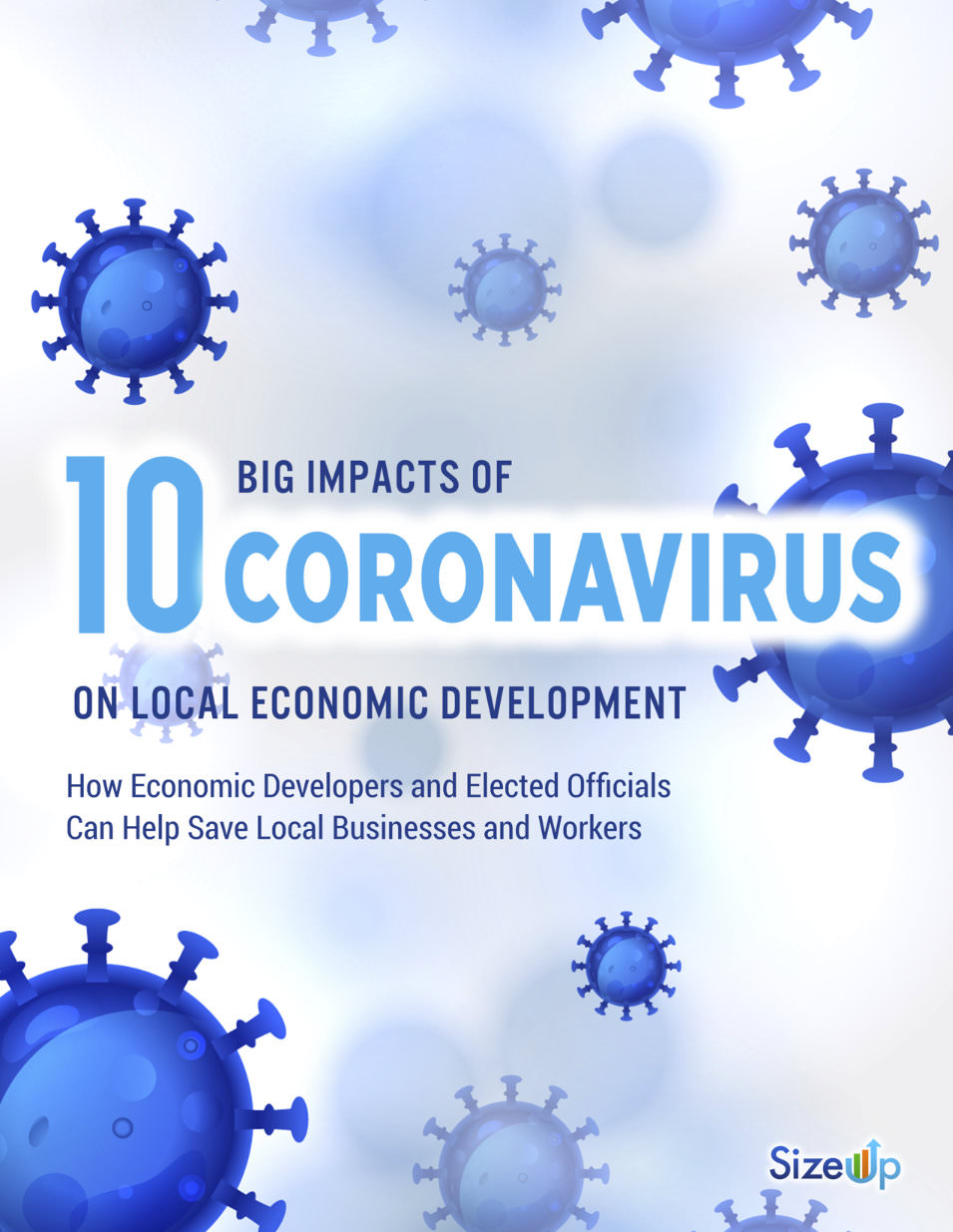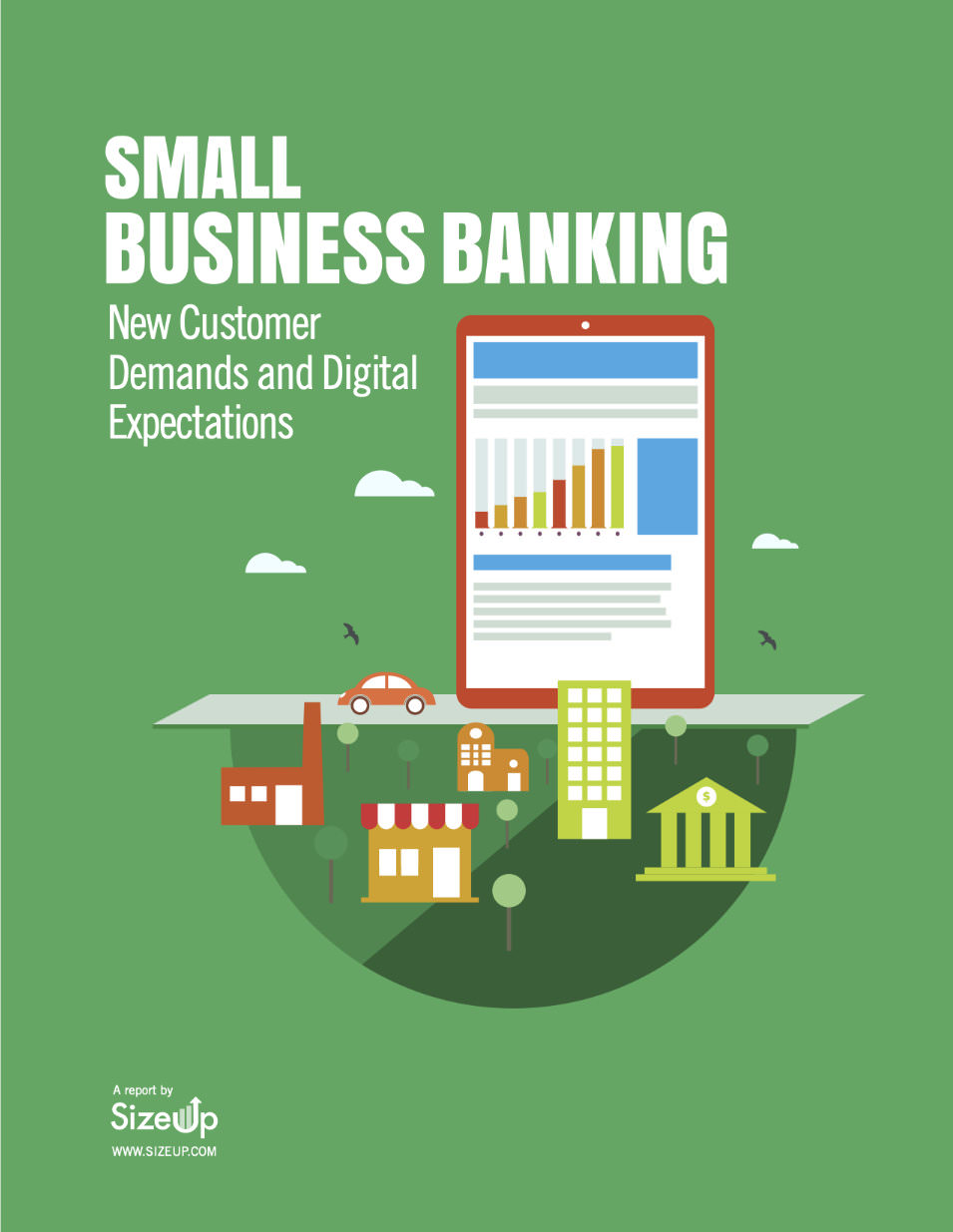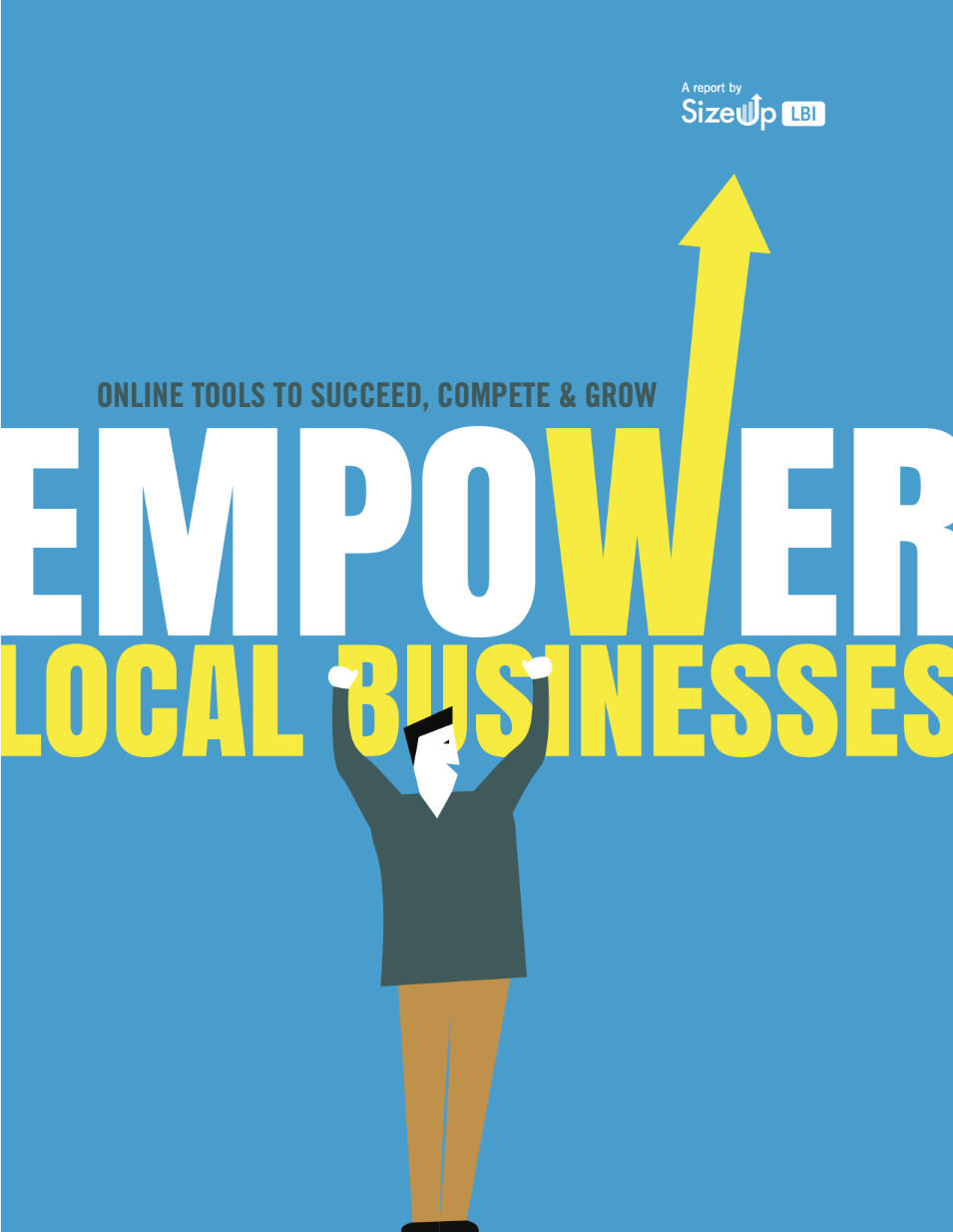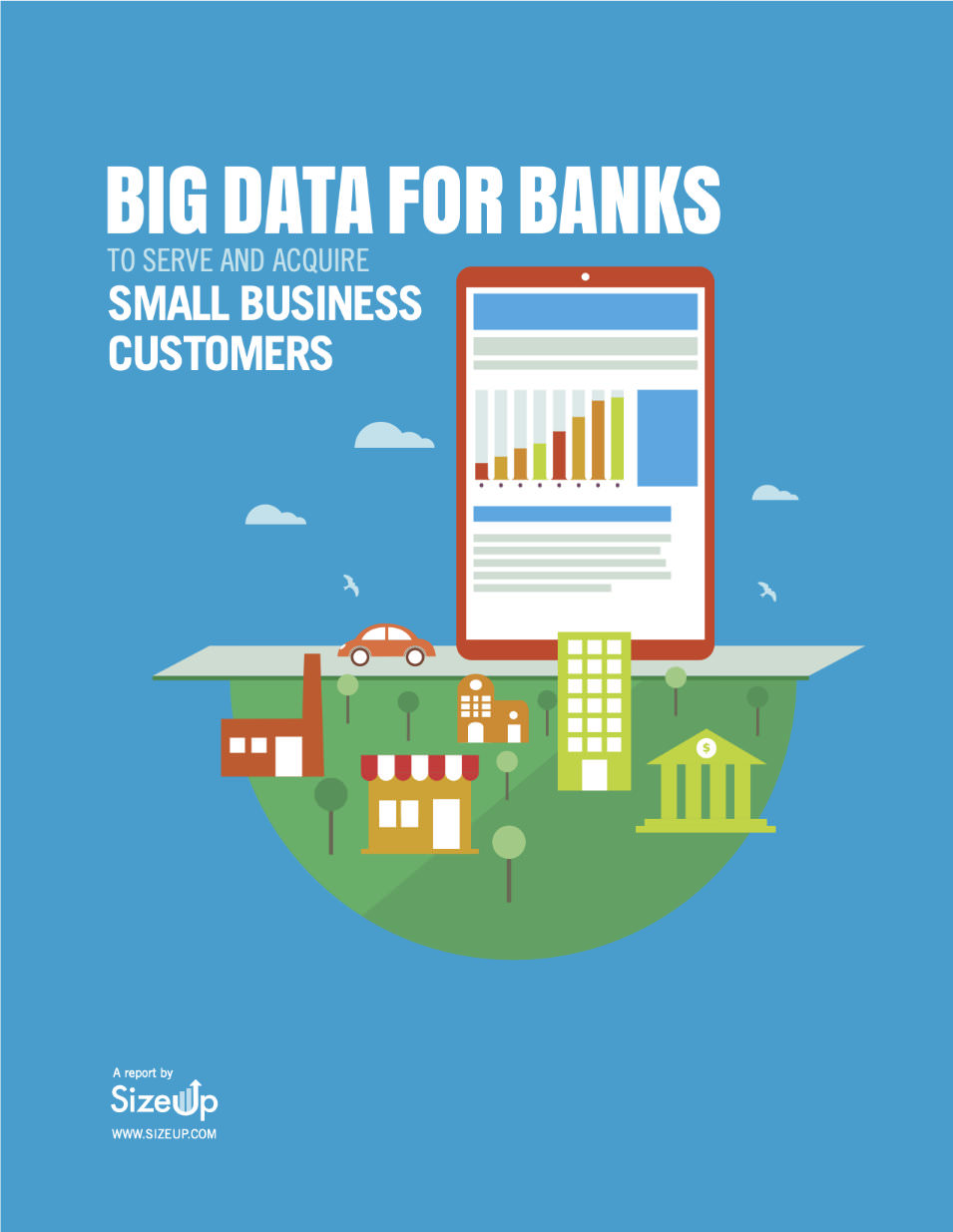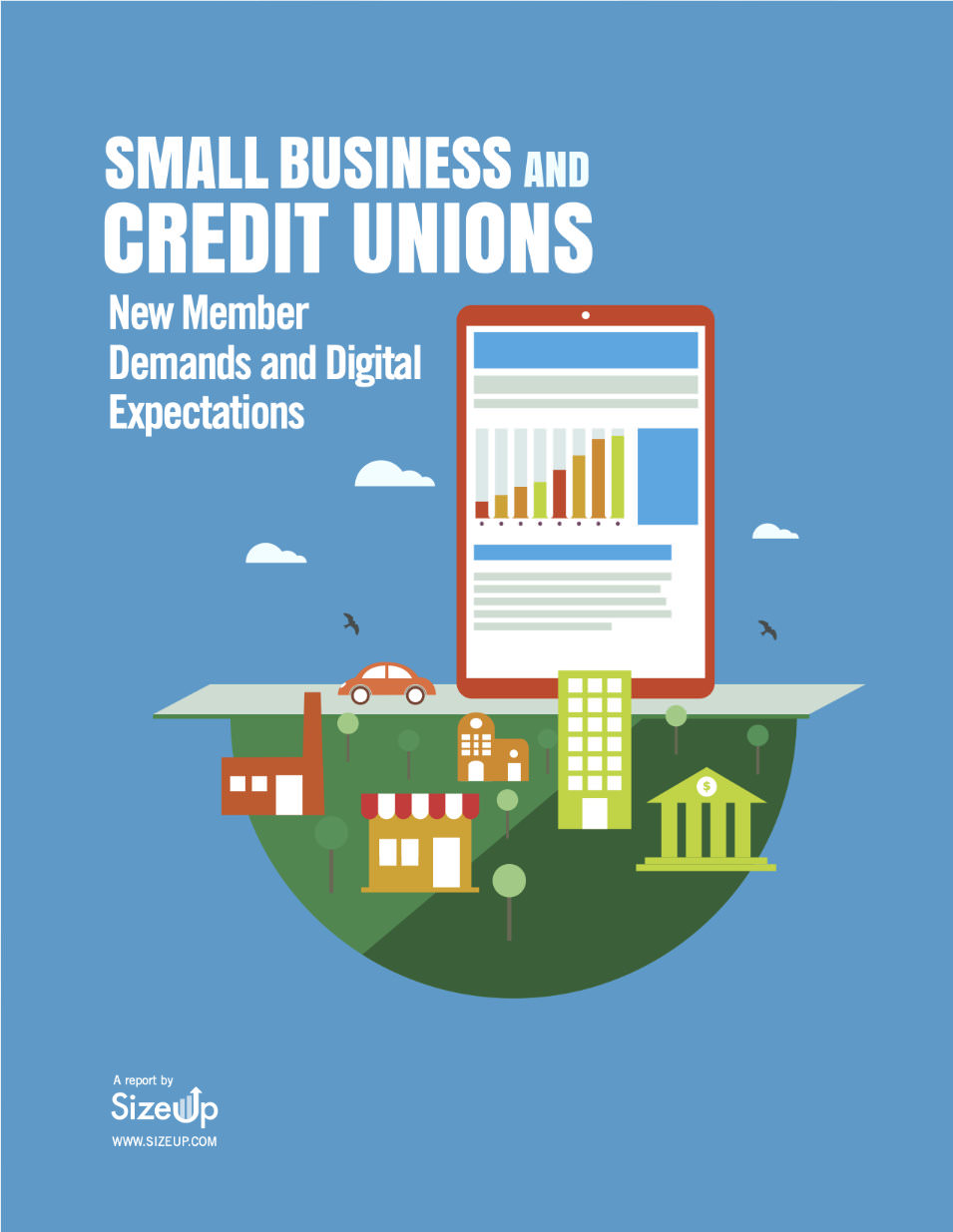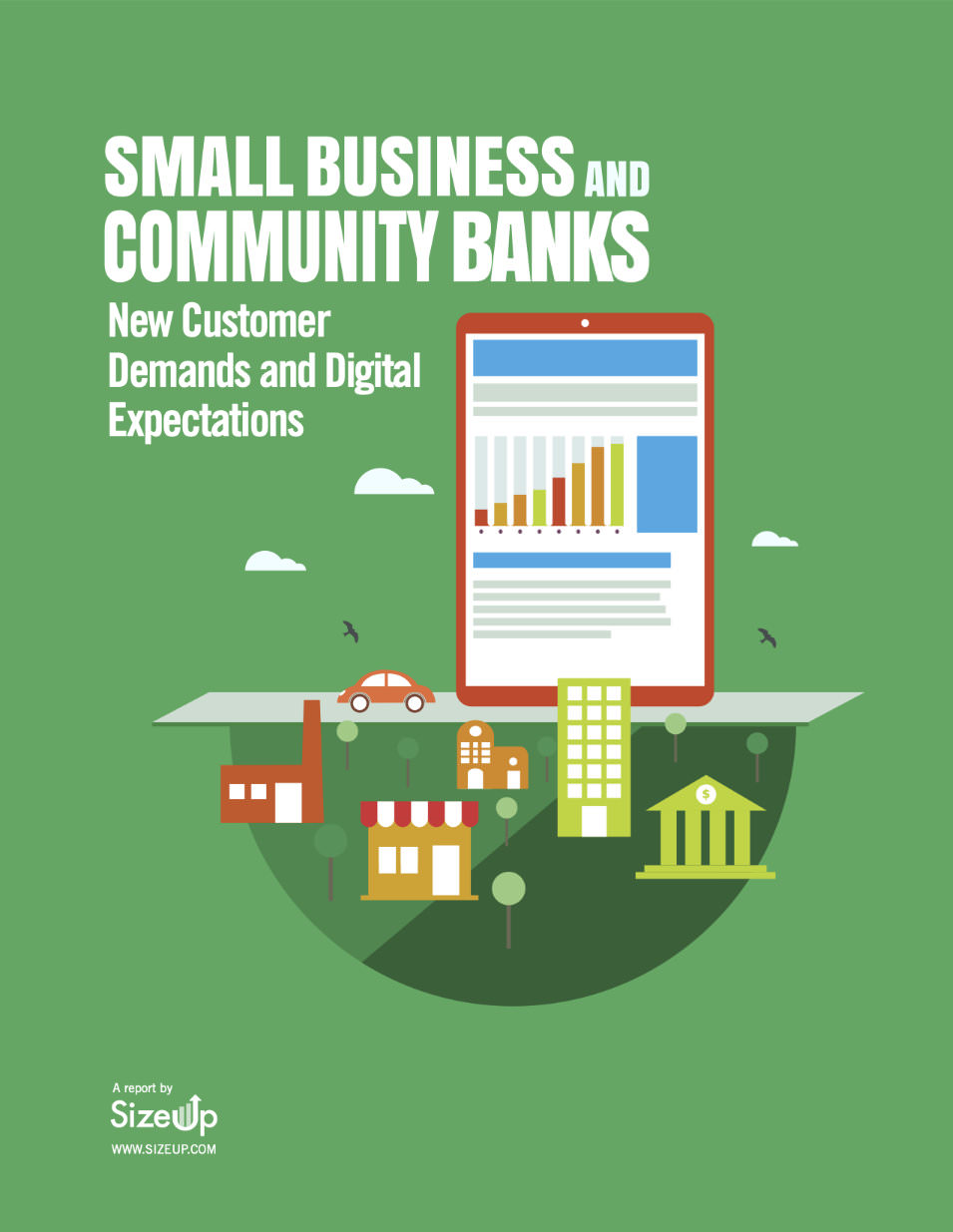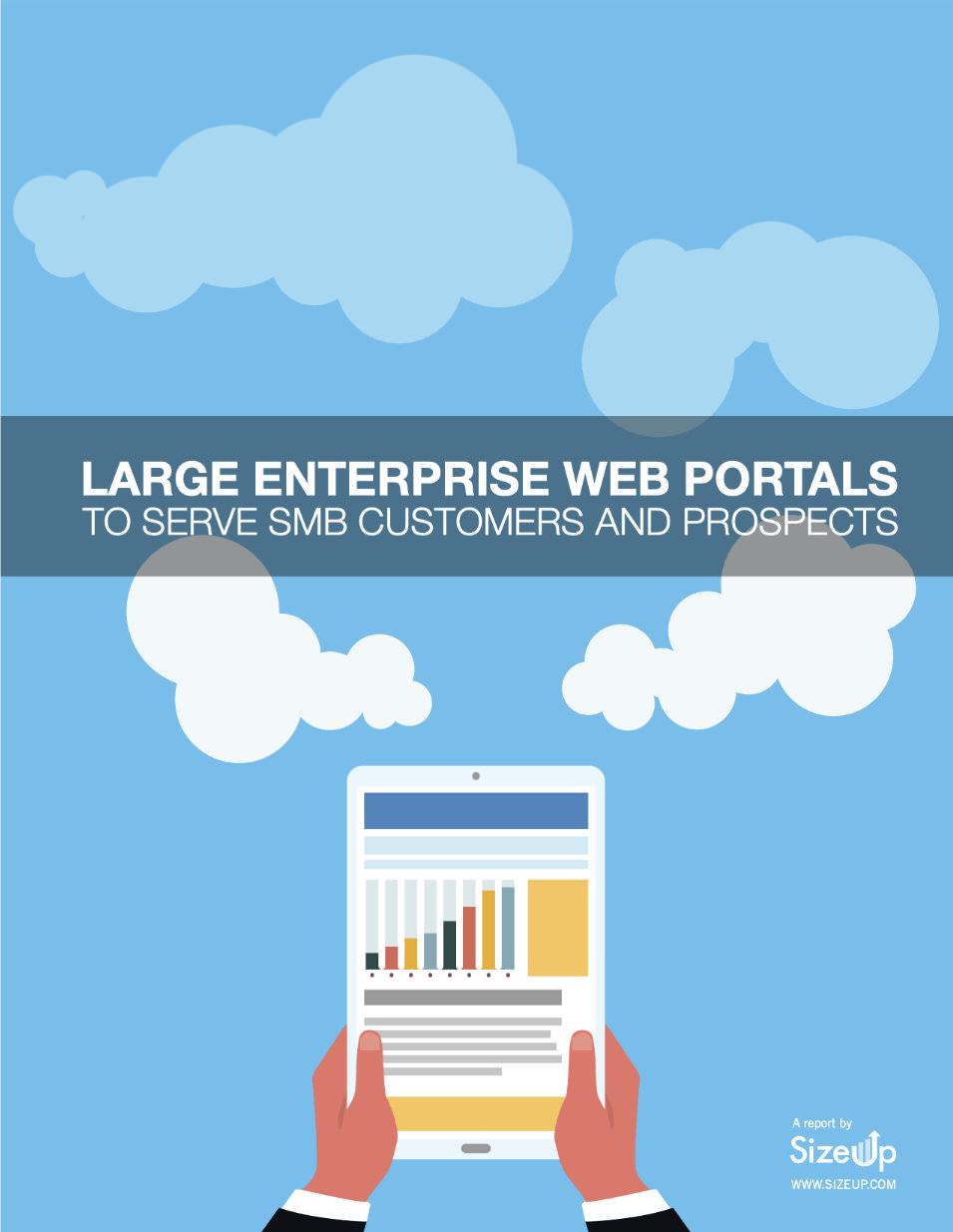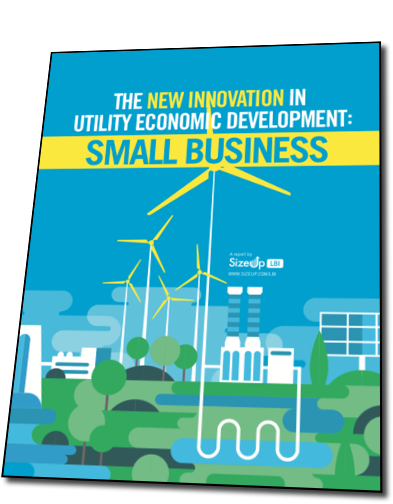
The New Innovation in Utility Economic Development: Small Business
Online Tools to Compete, Succeed, and Grow
Small Business is Big Business in Utility Economic Development
More impactful than business attraction
The effect of business attraction is tiny compared to that of existing businesses. Supporting the growth of small businesses has the largest impact on job creation…
Small business is big business for utilities
Helping customers makes good business sense
Small businesses become utility advocates through goodwill
How Utilities are Empowering their Business Customers
Smart power companies are responding to challenges and empowering their business customers with information…
Challenges become strategies for power companies
The New Innovation in Utility Economic Development: Small Business
Utility companies play an important role in facilitating economic development in the communities they serve. They employ economic development professionals that work collaboratively with communities, economic development organizations, and businesses in the areas they provide service. Historically these utility economic developers work as partners to facilitate the attraction of new business, which then become customers of the utility company.
Innovative utility economic development practitioners are now expanding beyond traditional activities to take advantage of even larger economic growth opportunities. They are doing this by focusing economic development efforts on small and medium businesses (SMB) which are already located in their service territories and are current customers.
There are clear competitive advantages for utilities focusing economic development resources on small businesses including:
- Greater job creation and economic impact
- Direct benefit to existing SMB customers
- Direct impact increasing the utility’s bottom line
- SMBs become utility advocates through goodwill
1. Small businesses assistance has a higher economic impact than business attraction
The effect of business attraction is tiny compared to the economic impact of existing businesses. And the relative quantitative value of local small businesses is simply too hard to ignore: there are about 750,000 businesses that need a location each year compared to about 22,000,000 businesses that exist in the USA (Source: U.S. Small Business Administration, longitudinal data). EDOs can get better ROI by focusing on the local opportunity, which is nearly 3,000% larger.
Supporting the growth of small businesses also has the largest impact on job creation. Small businesses account for 64 percent of net job creation in the private sector. In difficult economic times, small businesses contribute even more. After the last recession, the share of net new jobs attributable to small businesses grew to 67 percent[1]. So, for utilities that are trying to help the many American communities facing challenging times with high unemployment, slow job creation, and the loss of jobs, their best path to growth lies with small businesses.
2. Helping customers makes good business sense
The most important customers for utilities are the ones they have now because those customers are the source of revenue that keeps the utility functioning and successful. Keeping current customers happy, served, and successful is at the core of every successful company’s goals and it makes sense for utility economic development too.
For many small business customers of a utility, their relationship with the utility is only transactional. The utility provides the basics of delivering consistent and competitive power, which is the most basic expectation. Although consistent power is essential to the SMB’s ability to function, they only see this as a base expectation and not an advantage. Often, if a SMB customer is interacting with a utility for anything other than paying for the service it is to complain that there is a problem with their service not working correctly. This means the two most common interactions a SMB customer has with a utility are both painful: paying and complaining because something didn’t work.
However, power companies are now in a position to change the basic relationship they have from being a simple, transactional utility into a higher value relationship in which the utility becomes the SMB’s partner for success. This changes the relationship from the SMB seeing the utility as a necessary cost to a valuable advantage.
The utility economic development division can enable this by providing their small and medium sized businesses with assistance to help them successfully startup, grow, and improve. The ways utilities can do this is enumerated throughout this document.
3. Small business is big business for utilities
For some utility companies, they use economic development for positive marketing to show that they are helping the economies of the communities they serve. While this is incredibly important, insightful utility economic developers are discovering that they can provide assistance to small businesses that directly impact the bottom line and corporate goals of their company.
Assisting small businesses doesn’t only have to altruistic. It can also be self-serving, even when it actually helps everyone in a win-win scenario. For example, through the process of assisting small businesses, utilities can introduce helpful utility-provided products and services (including those that are unregulated) that can help the small business optimize or improve the way the SMB is operating. Or, through increased engagement, the utility can help reach and influence more SMBs to change practices for power consumption which they are obligated to do by the regulatory agencies that oversee the utility. In addition, a satisfied constituency of SMB customers translates into an easier time getting approvals for rate increases according to industry insiders.[2]
Also, if utilities are able to assist their small businesses to grow and become more successful, these small businesses turn into big businesses. These big businesses are even more valuable as customers and they have already developed a positive opinion of the utility because the utility was its partner in its growth toward success.
It is possible for utility economic development agencies to implement a future reality in which the small business isn’t complaining about the utility but is publicly talking about how the utility helped it grow into a more successful company.
4. Small businesses become utility advocates through goodwill
A successful SMB online assistance program can significantly benefit the utility company in how it is perceived by small businesses and communities, thereby delivering goodwill. And because there are so many SMB customers, the magnitude of the audience that can be reached is massive. Through engaged SMB assistance utilities can improve SMBs view of the utility:
My utility cares about small businesses like mine.
For many businesses, the only interaction they have with their utility is signing up for an account, paying each month, and calling for service when the lights go out. Providing small business assistance services online makes your utility more accessible and facilitates positive relationship building between the utility and the business client.
My utility is my small business partner for success.
“Free” is a compelling attraction to use a utility’s new small business assistance service and retain existing customers if they have other power provider options. And when that service delivers real value to the SMB’s bottom line, they will value the company that provided it as an authentic partner. That type of feeling, value, and relationship delivers long-term value to the utility.
My utility cares about corporate responsibility, economic development, and goodwill.
Although implementing SizeUp LBI will likely be the initiative of the utility economic development division, there are clear benefits to the corporate social responsibility (CSR) division of the company, as this is a tool that helps existing small businesses in the communities the utility serves. As such CSR can be a joint partner and funder of utility EDO programs supporting small businesses.
Corporations, politicians, and local EDOs are all frequently accused of not doing enough to help small businesses. Yet in every election, politicians praise the value and express their commitment to small businesses. Corporations also have marketing conveying their support of small businesses. Everyone supports and loves small businesses. And the support makes sense because of both the economic value of SMBs and because emotionally there is a deep appreciation of small businesses as a cornerstone of American culture. Utility economic development professionals know supporting small businesses is an economic and social responsibility opportunity. Yet for all the belief in supporting small businesses, traditional methods to actually make an impact have been a challenge. Fortunately, innovative solutions are now available to the Utility economic development profession.
Challenges and Strategies for Utility EDOs Serving Small Businesses
Although the benefits of working with small businesses are significant for utility companies, the challenges can also be formidable.
- So many SMBs – One of the key attractions of the small business market is that there are so many of them. But this can also be the foremost obstacle to implementing a successful utility economic development program targeting SMBs. How can Utility EDOs serve such a large audience effectively?
- Small businesses are all so different – Although SMBs share many of the same challenges, the entrepreneurs that run them often think their company is unlike any other one. This is partly true in that small businesses in different industries really are different. Even within a general industry category like manufacturing, a company that makes candy, another that makes clothing, and a different one that makes medical devices are all manufacturers. Yet these small business manufacturers all are very different. How can Utility EDOs provide assistance that is appropriate to the unique industries and locations that their SMB customers operate?
- strong>Scaling to serve SMBs – Even if a Utility EDO develops a quality SMB-focused economic development program, will it have the resource capacity to provide the service to the large audience of SMBs in the utility’s service territory?
To address these big challenges requires Utility EDOs to select from different big solutions to make serving small businesses viable. These include:
-
Big budgets – Large budgets enable Utility EDOs to implement more programs and serve larger audiences. However, it is common for even well-funded utility EDOs to be constrained by budgets.
-
Big staff – Having more staff can enable Utility EDOs to be more physically available and geographically distributed to reach more SMB customers. However, even large utility EDOs have relatively diminutive staff. As such, Utility EDOs have tended to be partners with other local EDOs to deliver services by providing programs that these local EDOs can participate in [note: include examples] or funding local EDO programs.
-
Big internet – A relatively new opportunity is for Utility EDOs to provide online services that can help their customers and their local EDO partners. This can be both scalable and affordable. Some examples of how utilities do this include Kansas City Power and Light providingsearchable databases of properties, Cleco delivering online site selection analysis assistance for corporate location decisions, Arizona Public Service providing demographic and business data for its communities, and Florida Power and Light offering small business intelligence for market research.
Four Utility EDO Model Programs to Serve Small Business
The following are four program solutions that Utility EDOs can implement:
1. Traditional utility small business services
Continuing to provide traditional services to small businesses that the power company already provides is obvious. The programs already exist and are likely staffed and funded outside of the Utility EDO division. An example of this would be an energy efficiency program that includes
on-site energy assessments, installation of savings measures, instant discounts and rebates. In most locations these programs are required and regulated by state government.
Traditional programs are valuable to the utility’s small business customer, but they often don’t differentiate the utility as innovative. However, of the existing SMB programs the utility provides, the opportunity is to identify which of these current SMB programs is relevant to facilitate economic development. These are the programs that the Utility EDO can further promote, including through partnerships with local EDOs.
2. Traditional Business Retention and Expansion
One of the most common programs that local economic development organizations provide to small businesses is called “Business Retention and Expansion” (BRE). This is a process by which EDpros develop direct relationships with local businesses including personal meetings in which they identify how they can provide support to help the business expand or mitigate challenges the company is experiencing. According to research by the International Economic Development Council, BRE programs tend to target the community’s largest employers, primary job creators, and target industries. As such, this type of program often excludes small businesses, retail, and service companies.[3]
For Utility EDOs a BRE program is probably the least realistic to implement because even local EDOs don’t have the capacity to individually meet with the numerous SMBs in their city, let alone the potentially tens or hundreds of thousands that a Utility EDO may have in its service territory.
3. Economic Gardening
From its founding in Littleton, Colorado, Economic Gardening has defined itself as the opposite of business attraction. Instead, “it is an entrepreneurial approach to economic development that seeks to grow the local economy from within. Its premise is that local entrepreneurs create the companies that bring new wealth and economic growth to a region in the form of jobs, increased revenues, and a vibrant local business sector. Economic gardening seeks to focus on growing and nurturing local businesses rather than hunting for “big game” outside the area.”[4]
The Edward Lowe Foundation points out that “in contrast to relocation or startup initiatives, Economic Gardening targets second-stage companies already operating in a community. It helps these existing businesses grow larger by assisting them with strategic issues and providing them with customized research. Economic Gardening differs dramatically from traditional types of business assistance. It’s not about business plans, financial analysis or workforce development. Instead, researchers assist in five key buckets: core strategy, market dynamics, qualified sales leads, innovation and temperament. Within these areas, Economic Gardening specialists leverage sophisticated corporate databases, geographic information systems, SEO and Web marketing tools to help second-stagers:
Identify market trends, potential competitors and unknown resources.
Map geographic areas for targeted marketing.
Raise visibility in search engine results and increase web traffic
Track websites, blogs and online communities to better understand competitors as well as current and potential customers.
Refine their core strategy and sustainable competitive advantage.”[5]
Economic Gardening is a targeted way that Utility EDOs can focus on a limited set of high-growth, “second-stage” companies by hiring Economic Gardening researchers to implement this program or funding local EDOs to implement it. However, because it is a staff-driven program that delivers consulting for the small business, it is not something that can be scaled to serve large numbers of small businesses. In fact, Economic Gardening is designed to exclude most businesses from the program that do not show the potential for significant growth.
4. Online Custom Small Business Intelligence Assistance
A new initiative that Utility EDOs can pursue is to provide their SMB customers with online assistance to help them grow and succeed in business. In today’s information economy businesses without access to information are at a significant disadvantage. As such, they are at risk of stunted growth and even failure. Although only large companies have had the financial and staff resources to be able to internally create or hire consultants to create custom market research and business intelligence, breakthrough technologies related to data, computing, and the Internet is making it possible for Utility EDOs to provide this type of economic development assistance to small and medium-sized businesses.
This type of program achieves many of the top goals of Utility EDOs while remaining within practical constraints.
Support unlimited numbers of SMBs by providing the service through the Utility EDOs own website.
Provide individually customized SMB assistance unique by industry and geography using existing SizeUp big data analysis and algorithms.
Requires no additional Utility EDO staff or staff time because the program is self-serve and online.
Low implementation budget relative to market size.
Enhance existing partnerships by delivering a high-quality economic development program to local EDO partners, a service local EDOs may not be able to afford on their own.
Foster goodwill with local elected officials and community organizations by assisting the politically popular agenda of supporting local small businesses.
Innovation Case Study: Florida Power and Light
FPL identified a huge market opportunity in economic development if it could scale its assistance to the State of Florida’s small and medium-sized businesses by providing online services using SizeUp LBI software. The program enables small businesses a way to access Do-It-Yourself assistance that delivers high-quality analysis to help the business grow. The analytical reports are customized for each business and are unique by industry and geographic location. The online program is free to small businesses, available 24 hours-a-day, and is simple to use.
Access to this kind of online market data improves the competitive playing field for small business owners. FPL’s online program empowers Florida’s small businesses to make smarter decisions based on data. Its online service addresses this small business need and delivers with four market intelligence tools: Business and Industry Analysis, Competitive Intelligence, Advertising Analysis, and Demographic Analysis.
FPL’s implementation of SizeUp LBI: Four tools to build the foundation of a successful online small business support strategy.
- Compare business performance to competitors
Business owners can find out how their performance compares to all other competitors in their industry, based on benchmarking of their revenue, employees, years in business, and other measures. An entrepreneur that has yet to start a business can use this tool to assess whether their projections are realistic given the state of the competitive market.
It is important for businesses to know where they stand in relation to direct competitors, because they can’t know what to improve without knowing where they currently stand. When they know which categories are their weakest compared to competitors, they can then focus more attention on improving in those areas.
- Find potential customers, suppliers, and competitors
SizeUp LBI shows business owners the locations of potential customers and suppliers. If the owner is looking to expand, he or she may want to consider areas that have a lot of potential customers (shown in green on the map image X) and not so many competitors (shown in red). Businesses that sell directly to consumers can track where households spend the most dollars. Business owners can map local patterns for hundreds of consumer expenditure categories, ranging from women’s sweaters to new trucks.
This tool also helps business owners identify potential business customers and suppliers. Users of the website simply enter the types of industries from which they would like to find buyers or suppliers, and the service displays the business name, street address, as well as phone number and website when available. For time-starved business owners, this research saves a huge amount of their time. A great additional advantage to this tool is that it is encourages localbusiness transactions.
- Identify the best geographic places to advertise
Business owners can use SizeUp LBI to find the areas with the highest total revenue for their industry so they can target advertising to areas with strong industry revenue. Or, they can choose instead to isolate the areas that are most underserved for their industry, as those might be areas where they can fill a gap in the local market. Owners can also restrict the search to only display areas that fit certain criteria important to the business, such as a minimum household income, demographics, or business characteristics. Comparing this analysis with the household consumer expenditure data gained form the competitive intelligence section, business owners can precisely narrow down the optimal locations to advertise.
- Gather demographic, spending, and labor research specific to a unique business location
Business owners need to understand who lives and works in the areas surrounding their business location. Using SizeUp LBI, owners can access over two thousand demographic, spending, and labor force data characteristics for the potential customers or employees around them. For instance, an owner can find out how many employees of a certain occupation work within a 15 minute drive-time of their address or the amount of money the typical household spends eating out for dinner.
Moreover, basic demographic analysis offers a data report with information about an area, but doesn’t actually reveal geographic location of your target market. SizeUp LBI goes this one step further, by allowing users to visualize demographic data spatially and highlight exactly where the densest portion of a given market is located. By comparing that data to the data you have gathered in the other portions of the service, businesses can now pinpoint exactly where the most desirables markets are located. This is extremely useful for businesses looking to open a new location or target customers specifically in potentially profitable areas. Business owners can specify custom boundaries for demographic analysis or identify demographics, consumer expenditure, or labor force data around a specific address. Business owners considering several different locations can run this analysis around each address and find out exactly which location would give them the best chance at success.
Small businesses want benchmarks and metrics
Even though small businesses want to compare their performance to competitors, they lack access to benchmarks and metrics specific to them.[6] Often this is because benchmark data is only available for general industries such as business services, retail, construction, and restaurants. But small businesses don’t see themselves as “general” businesses; they have identified specific areas of expertise. Instead of identifying with these general categories, they self-identify as accountants, women’s clothing stores, electricians, and Italian restaurants – because that’s who they really are.
FPL’s implementation of SizeUp LBI solves this problem by enabling unique businesses to compare themselves to only the businesses they actually compete with, using benchmarking data for over 1000 industries.
Utility as Small Business Partner
Yet small businesses face incredible challenges. In spite of the hard work put in by entrepreneurs to make their new business startups succeed, about half fail within five years.[9] This is an alarming rate of failure and, to add additional pain to these heroic entrepreneurs, when they fail they can also lose their own personal wealth. Sixty-five percent of small businesses use credit cards, but only half of those cards are in the company’s name, exposing business owners to extra risk to their personal finances[10].
Utility economic development organizations can be a new hero to small businesses in their service territories by becoming an authentic partner in their entrepreneurial success. The advantages for the utility, communities, and small businesses are too great to lose out on. Innovative Utility EDOs are taking steps and implementing programs to define themselves as empowering small business.
Key Takeaways
Innovative utility economic development organizations are expanding beyond traditional services related to business attraction to pursue the larger opportunity of supporting small businesses in their service territory. They are doing so by providing direct services and partnering with local EDOs. Online software technology, cloud computing, and access to big data has opened the possibilities of utility EDOs to provide new services to small businesses that were never possible before.
Endnotes:
[1]SBA Office of Advocacy’s Frequently Asked Questions, September 2012. http://www.sba.gov/sites/default/files/FAQ_Sept_2012.pdf
[2]“5 Reasons Utility Companies Should Hire a Small Business Efficiency Partner in 2015” Lime Energy Blog. January 9, 2015. https://www.lime-energy.com/blog/5-reasons-utility-companies-should-hire-a-small-business-efficiency-partner-in-2015/
[3]“Beyond the Survey: How EDOs Add Value through Business Retention and Expansion,” International Economic Development Council EDRP, September 2017
[4]“Seven Steps to Developing an Economic Gardening Implementation Strategy,” September 16, 2010, excerpted from “Strengthen Your Local Economy through Economic Gardening, by Christine Hamilton-Pennell, published by ICMA.
[5]Edward Lowe Foundation. http://edwardlowe.org/entrepreneurship-programs/economic-gardening/
[6]CEB Research presented at the CEB Marketing to Small Business Summit 4/29/14.
[7]Small Business Administration Office of Advocacy, 2002 – 2010.
[8]The Andersonville Study of Retail Economics, Civic Economics, October 2004 and Economic Impact Analysis: A Case Study, Civic Economics, December 2002
[9]SBA Office of Advocacy, Sept 2012. From data from the Bureau of Labor Statistics, BEA.
[10]Marco Carbajo, “Should I Apply for a Small Business Credit Card?”, Small Business Administration

